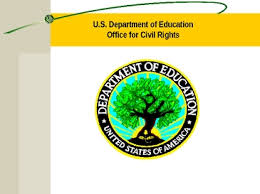Fourth Circuit Decides Case on Transgender Students’ Rights
May 5, 2016
On April 19, 2016, the Fourth Circuit Court of Appeals issued a decision addressing transgender and gender nonconforming students. In G.G. v. Gloucester County School Board the Fourth Court was presented with the question of whether Title IX requires that schools allow transgender students to have access to restrooms consistent with their gender identities. The Fourth Circuit’s Decision In 2015, Virginia’s Gloucester County School Board passed a resolution endorsing a policy that provided male and female restrooms and locker rooms in its schools, but limited their use to those of the corresponding biological gender. The policy also provided that “students with gender identity issues shall be provided an alternative appropriate facility.” The School Board took this step in the face of community opposition to the fact that the high school permitted G.G., a transgendered boy, to use the boys’ restroom for seven weeks. Members of the community appeared at two different public hearings to express opposition to the practice of allowing G.G. to use the boys’ restroom and to express concerns about the privacy of other students and the potential for sexual assaults in restrooms. The American Civil Liberties Union of Virginia brought this case on behalf of G.G. seeking an injunction of the School Board’s policy arguing that the policy violated both Title IX and the Equal Protection Clause. Title IX of the Education Amendments of 1972 states that “no person shall on the basis of sex, be excluded from participation in, be denied the benefits of, or be subjected to discrimination under any education program or activity receiving federal financial assistance.” 20 U.S.C. § 1681(a). The U.S. Department of Education’s regulations implementing Title IX add that the practice of maintaining separate bathroom and locker room facilities on the basis of sex is not discriminatory as long as facilities are comparable. While Title IX and the regulations have been in place since 1972 and 1980, respectively, the question of how they apply to transgender individuals was not explicitly addressed until recently; in a January 7, 2015 opinion letter the Department’s Office for Civil Rights (OCR) advised that the regulations require that any school receiving federal funding treat transgender students consistent with their gender identities. In its April 19th decision, the Fourth Circuit reversed the District Court’s dismissal of G.G.’s Title IX claim, and held that the United States Department of Education’s “interpretation of its own regulation…is entitled to…deference and is to be accorded controlling weight in this case.” The case was remanded to the District Court for further proceedings. While the Fourth Circuit stopped short of ruling that transgender students have a Title IX right to use restroom facilities consistent with their gender identities, the Circuit’s deference to the Department of Education’s position strongly suggests that Title IX applies to transgender students. Some interested parties, including the ACLU, interpret the Fourth Circuit’s decision as a mandate that all states in its jurisdiction fall in line with the Department of Education’s position; and it is noteworthy that the Fourth Circuit includes North Carolina, which passed a law in March 2016 limiting bathroom access in government buildings (including public schools) to the facility that corresponds to the individual’s physical birth gender. However, while this is a possible result, the implications of the Fourth Circuit decision remain to be fully realized. Implications for Schools in New York It is possible that other federal jurisdictions, including the Second Circuit, will follow the Fourth Circuit’s lead and defer to the Department of Education regulations. It is also possible that some courts will go a step further and on their own find that, independent of the Department’s regulations, Title IX requires that schools permit transgender individuals access to the facilities consistent with their gender identities. In July of 2015 the New York State Education Department (NYSED) published a guidance document consistent with the U.S. Department of Education’s position. It sets forth an expectation that schools in New York ensure that the transgender and gender nonconforming members of their community are not subject to discrimination or harassment. The NYSED guidance document specifically addresses how to handle restroom and locker room access, names and pronouns, and student records. Transgender students’ rights remain an evolving area, but the Fourth Circuit’s April 19th decision indicates that the Department of Education’s interpretation is the standard to which secondary schools and colleges and universities will be held. It is also very possible that the Department of Education Office for Civil Rights (OCR) will focus on transgender and gender nonconformity issues in schools with heightened interest. We encourage clients to reach out to us with questions about this decision and the Department of Education’s expectations.


 The Fable Children’s fables are often an overlooked source of wisdom. Take for example Aesop’s 17th century fable “The Monkey and the Cat.” As the story goes, a cat and monkey lived in the same house as pets. The monkey, desiring to eat the chestnuts roasting on the family hearth, dupes the cat into retrieving them by flattering the cat’s greater skill in such matters. The problem for the cat, however, was that as soon as she retrieved the nuts, the monkey would gobble them up, leaving an unfortunate ending:
The Fable Children’s fables are often an overlooked source of wisdom. Take for example Aesop’s 17th century fable “The Monkey and the Cat.” As the story goes, a cat and monkey lived in the same house as pets. The monkey, desiring to eat the chestnuts roasting on the family hearth, dupes the cat into retrieving them by flattering the cat’s greater skill in such matters. The problem for the cat, however, was that as soon as she retrieved the nuts, the monkey would gobble them up, leaving an unfortunate ending: On April 24, the Department of Education’s Office for Civil Rights (“OCR”) issued new
On April 24, the Department of Education’s Office for Civil Rights (“OCR”) issued new